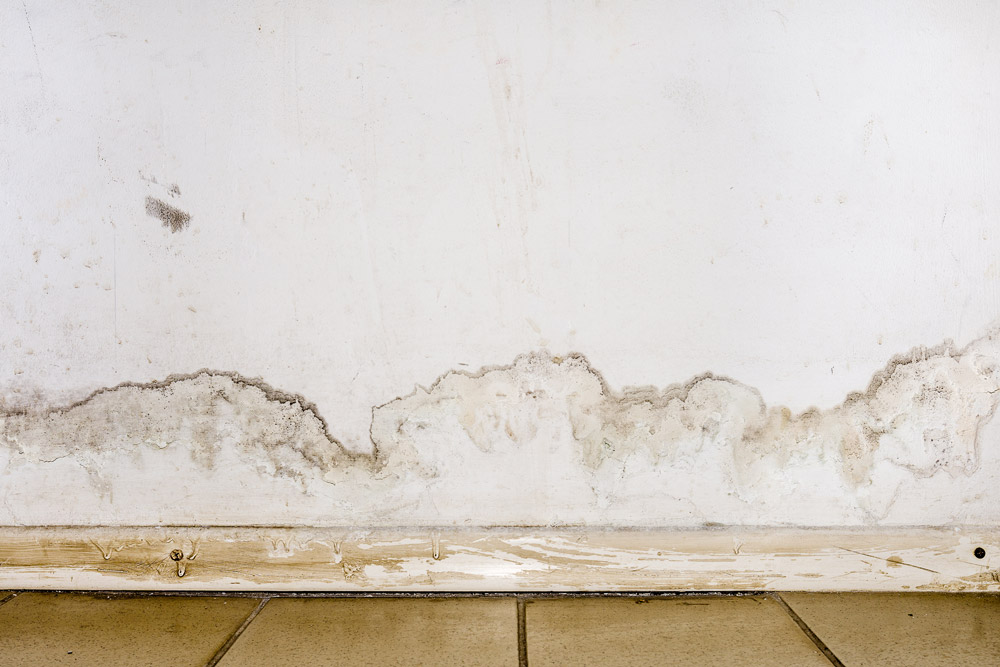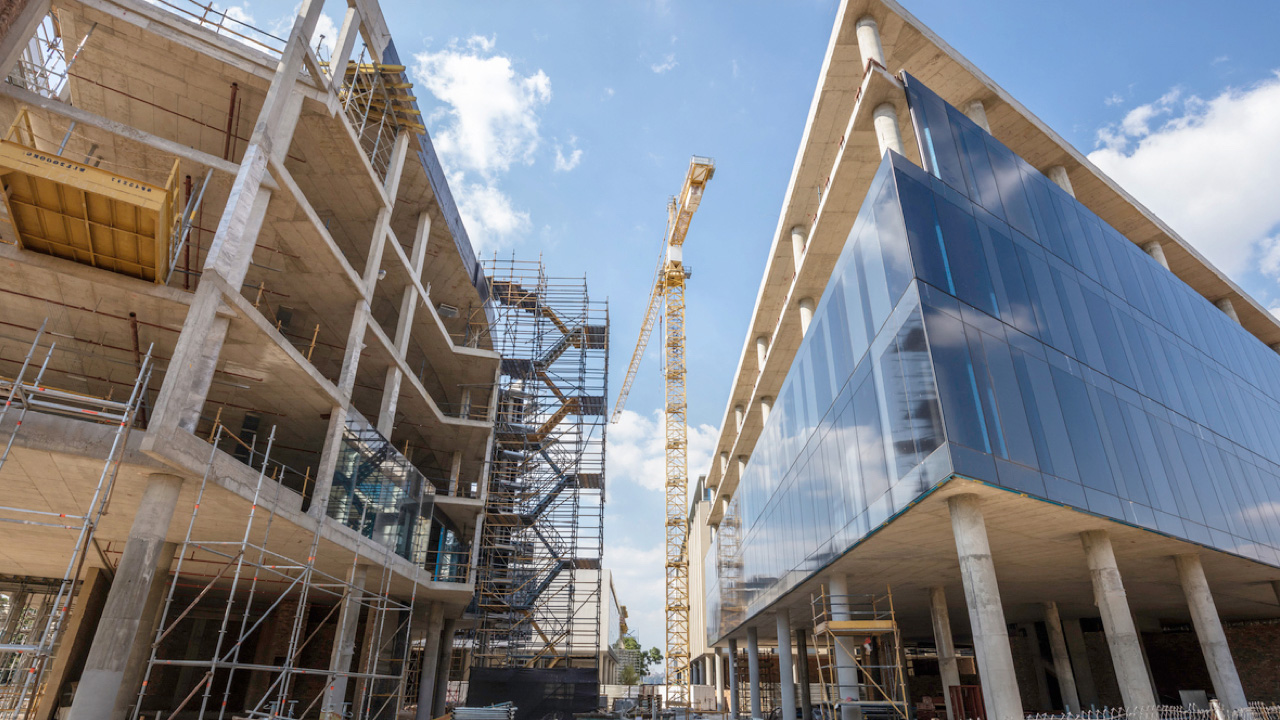Description
What is capillary rising moisture (capillary moisture)?
Capillary rising moisture is a common problem. It most often affects the walls of buildings. This happens when moisture from the ground or other source travels up through the walls through capillary action. Capillaries are fine channels with a very small diameter, which in most cases are connected to each other and together with the air form a network that passes through the building material. Water moves due to the high molecular force of attraction between the walls of capillaries and the liquid through channels and climbs on them contrary to the laws of gravity. The action of capillarity causes water from the earth to be absorbed upwards through the pores or capillaries in the walls. For capillaries with a diameter:
- 1.00 mm the water rises 15 mm;
- 0.01 mm the water rises 1500 mm;
- 0.0001 mm the water rises to 150,000 mm.

The type of capillaries also matters. With constantly narrowing, conically shaped capillaries, the water rises higher. Also, the height to which this moisture can rise is largely determined by the construction of the building.
The wall material and the type of mortar used will affect the rate of absorption. The capillarity of a material can be its advantage as well as its disadvantage. In any case, it is one of the important physical properties of the material.
The rising moisture will eventually evaporate unless there are other factors that can prevent evaporation. As a result, in most cases, a rise in humidity above 1.5 meters above ground level is rare.
What does capillary rising moisture lead to?
Usually, the increasing humidity is noticed first by the damage it causes to the interior walls of the building. The most noticeable are the compromising of the wall coverings and the plaster.
Around the wall affected by capillary moisture are probably other porous building materials such as wood, parquet floorboards, beams and sills. These materials will also easily absorb capillary moisture and you may find evidence of wood rot.
If no action is taken, the problem could be seriously exacerbated. Numerous factors affect the ability to manifest and the amplitude of the consequences for the structure.
Yeah, they're like that:
- Wall thickness
- Groundwater levels
- Type of masonry
- Evaporation rate
Capillary rising moisture often requires proactive action. If left untreated, it can lead to:
- Demolition and compromise of interior and exterior coatings and linings;
- Erosion and destruction of the building (structural) shell;
- Reducing the thermal properties of the structure, which increases the cost of heat energy;
- Adverse effects on the health of the inhabitants. Respiratory problems (asthma) and allergies are common;
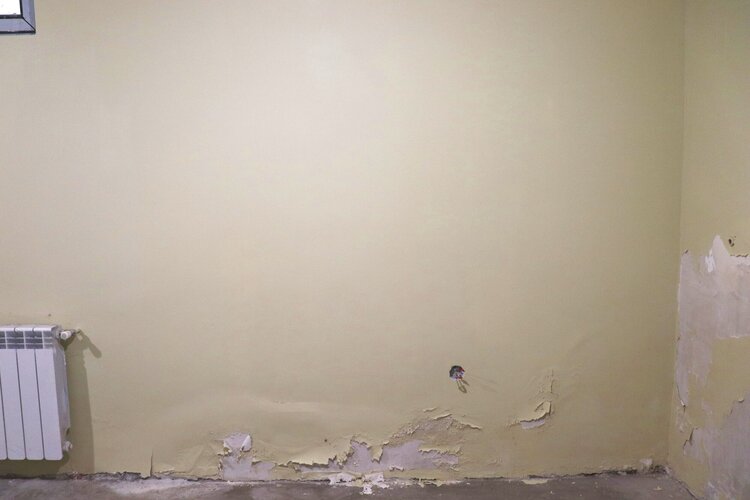
What are white, fluffy deposits?
The rising, creeping moisture transports moisture-attracting (hygroscopic) salts that are present in the building material or soil, which remain on the surface of the walls in the form of white, fluffy deposits when the water evaporates. Even if the problem with the capillary moisture source is eliminated, the moisture problem may recur. This is due to the hygroscopic salts that attract moisture from the air inside the building or room.
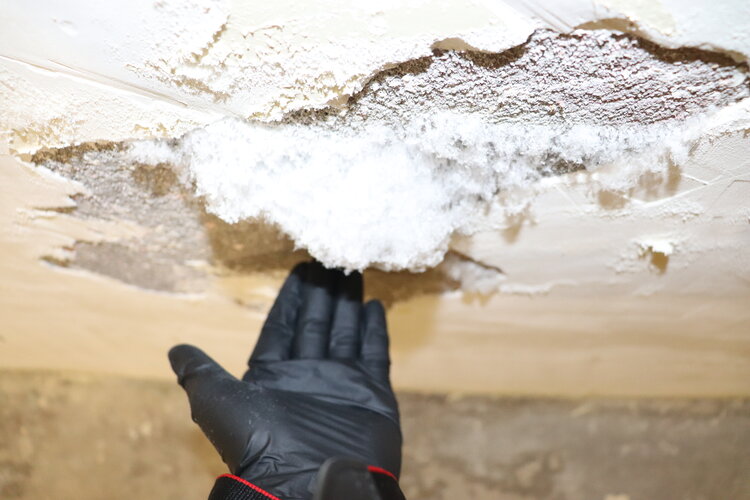
Visible spots often form on the walls, and the formation of crystals on the surface is often observed. This leads to compromising the wall coverings, even the fall of the plaster, which initially crumbles in the form of white powder (with impurities of salts). This happens when they increase their volume inside the pores of the surface during the crystallization process. Therefore, it is often necessary to replace damaged plaster or repaint.
Causes of capillary rising moisture
Most modern buildings have some form of barrier installed at the bottom of the wall or under the building, which aims to stop rising moisture from the soil or groundwater.
In most cases, this barrier is made of waterproof and non-absorbent materials such as bitumen, EPDM, plastic and others specified by the designer. Unfortunately, over the years, improper installation or incorrect specification, these materials may not perform their waterproofing function. In older constructions, they do not even exist. This means that there is no barrier to prevent water or moisture from "travelling" up the walls. Sometimes these barriers are not damaged, but there are places of "bridging" or the structural detail is not "fulfilled" well. This again creates conditions for the passage of water and nourishment of capillary rising moisture.
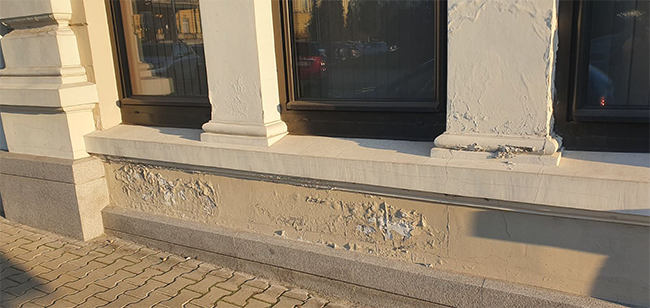
In Bulgaria, we often encounter capillary moisture associated with the lack of waterproofing around PVC windows and doors to terraces. Penetrating under the tiles or screed surface (rain) water, due to lack, compromised or improperly installed waterproofing can also lead to capillary moisture rising on the walls of the interior. Once a prosaic reason, such as a poorly glued PVC elbow on a water pipe under a screed, forced the owners of a gym in the basement to repaint several rooms due to capillary moisture, which is transmitted by soaked, hygroscopic cement screed to the walls. Proper examination and analysis of the possible source are of utmost importance here.
Diagnosis of the problem
Improperly diagnosing a capillary moisture problem leads to mistrust of customers. The reason is that inexperienced, unqualified or ill-intentioned traders or researchers make incorrect conclusions, on the basis of which incorrect or non-functioning technical solutions are given. This, of course, means that the problem persists. An example of a method of incorrect diagnosis is the use of thermal cameras, which cannot diagnose the cause of the moisture, but only show the temperature of the wall and compare it with others in the room.
Capillary moisture is often confused with moisture caused by condensation. This is the most common cause of misdiagnosis. We refer to many years of experience and international standards related to a practical code for the correct diagnosis of capillary rising moisture.
Sometimes, despite the correct diagnosis of capillary rising moisture, the contractor fails to interrupt or remove it properly. The reason is the unsuccessful injection of a chemical barrier, which we will talk about later, again related to incompetence or lack of skills, qualifications or attention.
What are the signs of capillary rising moisture?
There are a number of signs that indicate capillary moisture in the structure. The most common and easy to "read" are:
- Specific spots, wavy in shape and traces of salts on their periphery;
- Dark spots on the walls are damp to the touch. It is important to determine whether the moisture is superficial (on plaster, masonry or concrete) or deep;
- Changing the colour of wall coverings and their compromising. Paints peel off, wallpaper peels off, and plasters are destroyed;
- The smell of mould, and mildew. Feeling of "heavy", humid air;
 |
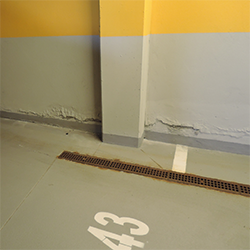 |
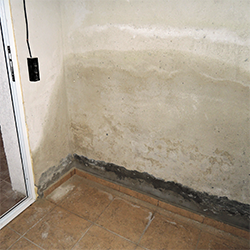 |
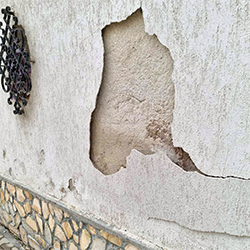 |
Capillary moisture on the inner (interior) and outer (exterior) walls
Most people first notice a problem with capillary moisture on the inner walls. Creeping moisture often leads to specific traces on the inner walls to the height to which the water has reached. In most cases, these spots reach a meter, a meter and a half above the floor skirting.
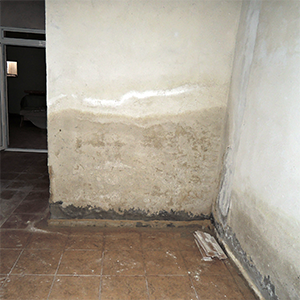
The height that the water reaches depends on several key factors. These include the structure of the material used and the evaporation rate. Masonry containing a high percentage of fine pores or capillaries will allow water to rise higher than that with fewer pores.
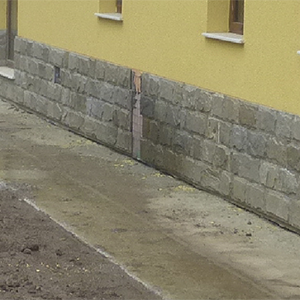
Rising moisture can affect both interior and exterior walls. When looking for evidence of capillary moisture on the exterior walls, you should again look for specific stains. You can also see salts on the surface, compromising the mortar between the bricks or masonry, as well as wetting and falling plaster.
How to stop capillary rising moisture?
First, a detailed inspection and analysis of the possible source of moisture and the condition of the structure must be performed. Once identified, the best method for stopping with capillary moisture is a two-part process, and we can provide you with the complete technical solution for this process.
1. Stopping capillary moisture at the source
With each newly constructed structure, a physical barrier is placed to break the capillary moisture, in the form of a membrane. This includes removing at least the first row of bricks, removing mortar and installing a physical water-repellent membrane. However, installing a new type of barrier in an existing structure is too expensive and impractical in most situations. An alternative solution is therefore required.
The most practical and cost-effective method is to use a creamy, super-hydrophobic, non-toxic emulsion. Before its application, the plaster and other wall coverings are removed. The product is injected through holes drilled in the wall, as a result it liquefies and enters the capillaries of the material from which the masonry is made. After curing, it becomes a breathable and water-repellent chemical barrier that stops capillary moisture.
Implemented in the right way, this solution is extremely long-lasting and effective.
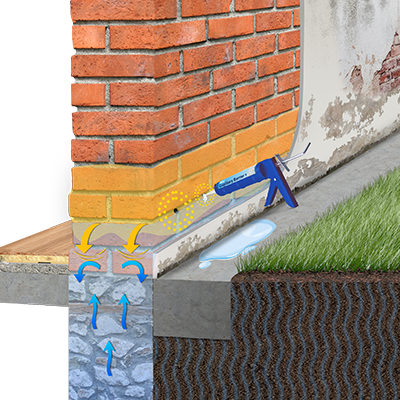 |
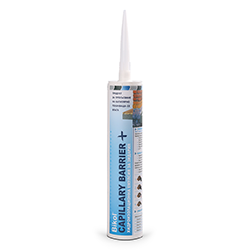 |
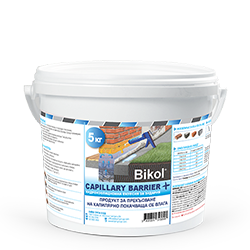 |
2. Restoration of plaster damaged by hygroscopic salts
Although the chemical barrier has an almost immediate effect, hygroscopic salts can still be found in the wall. Unfortunately, they are more likely to continue to attract moisture and will still moisturize it. In such cases, re-plastering the wall is recommended. We use products based on natural hydraulic lime, which protect the surface from moisture, salts and condensation.
They prevent the transfer of both residual moisture and hygroscopic salts from the main masonry to the new decorative surface. This ensures that no additional or recurrent damage occurs.

